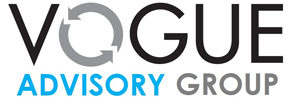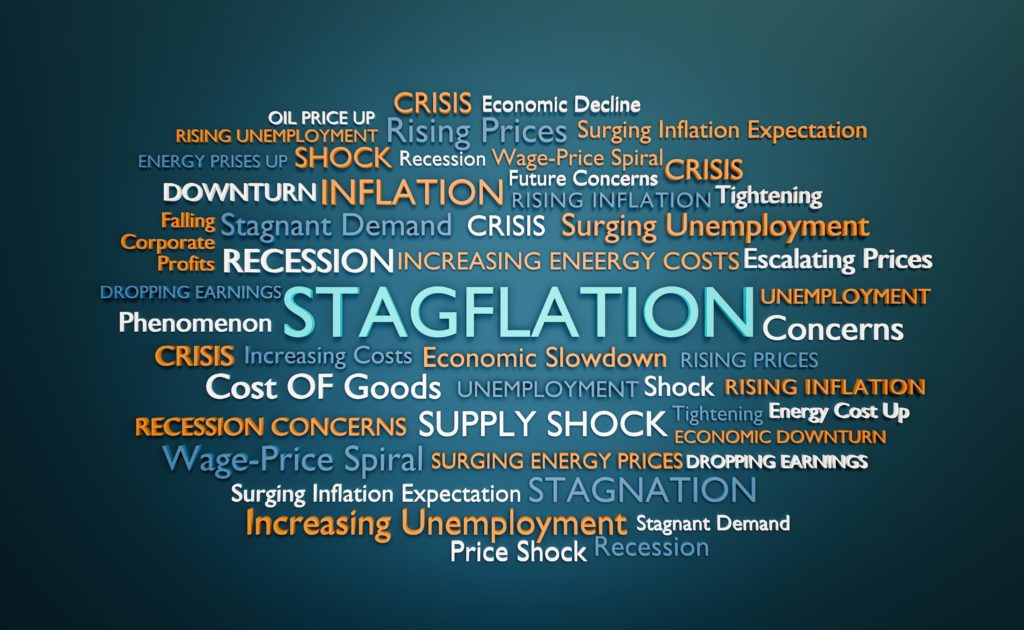The conversation regarding equity markets has shifted recently, from fear of rapid interest rate increases to the dissension in Ukraine and its impact on inflation and growth. Subsequently, stagflation is now back on investors’ minds.
Mentions of stagflation in online news stories have surged to more than 4000 a week, an increase of slightly more than 200 at the start of the year, ANZ Bank economists recently noted. “Stagflation worries have spiked,” they wrote.
What is stagflation?
Stagflation is indicated by slow economic growth and relatively high unemployment, or economic stagnation, which is simultaneously accompanied by rising prices (i.e. inflation). Stagflation can be alternately defined as a period of inflation combined with a decline in the gross domestic product (GDP).
The term “stagflation” was initially used by politician Iain Macleod in the 1960s during a time of economic stress in the United Kingdom. He was speaking in the House of Commons, discussing inflation versus stagnation and he termed it a “stagnation situation.” The term was used again in the 1970s to describe the recessionary period following the oil crisis during the U.S recession that caused five quarters of negative GDP growth. In 1973 inflation doubled and hit double digits in 1974. Unemployment reached 9% by May 1975.
Stagflation prompted the emanation of the misery index. The index, which is the sum of the unemployment rate and the inflation rate, served as a contrivance to show just how badly people felt when stagflation hit the economy.
Why Is Stagflation Bad?
Stagflation is a contradiction because slow economic growth would likely lead to increased unemployment but should not result in rising prices. This is why this phenomenon is considered harmful; an increase in the unemployment level decreases consumer spending power. However, if you tack on runaway inflation, the money consumers do have is losing value as time goes by. There is less money to spend, and the value of the money is in decline.
What Is the Cure for Stagflation?
There is no definitive cure for stagflation. However, the consensus among economists is that productivity has to increase to the point where it would lead to higher growth sans additional inflation. Which would enable the opportunity for the tightening of monetary policy to constrain the inflation component of stagflation. Doing so is easier said than done, so the key to preventing stagflation is to be highly proactive in avoiding it.
Are we headed for stagflation?
Whether the reoccurrence of stagflation occurs soon depends on how quickly monetary policy tightening will bring down inflation correlative to how quickly it will cause unemployment to rise and economic growth to fall. One enlightenment of the 1970s is that when inflation is high, the rate increase must also be high and stay high.
The reason inflation continued through the 1970s is that the Fed’s rate increases were neither high enough nor persistent enough to bring inflation down. During the first stagflation of the 1970s, even though the rate increase was more significant than the inflation rate, it was still not sufficient to bring down inflation. As a result, the Fed quickly followed its increase with a rate decrease, even before inflation had responded to the initial rate increase. Because of the slow response involved, inflation continued into the next stagflation.
It is possible that unemployment won’t rise, and economic growth won’t fall until late 2023. However, inflation will continue to rise after this initial rate rise, perhaps until late 2024, before it starts to decline. This assumes no other intervening economic events could induce economic growth to fall or inflation to persist, such as the recent oil price increase or the Russia-Ukraine war. Furthermore, the critical question is, will unemployment rise and economic growth fall enough to cause stagflation?
Stagflation in Australia
The former Reserve Bank governor Ian Macfarlane delineated the emergence of stagflation in a 2006 Boyer Lecture, stating unemployment more than doubled in about 18 months to 5.3% in December 1975, when inflation had hit 14.4%. “This was a situation that had never been experienced before, so a new word had to be invented. The word was stagflation,” Macfarlane said.
Macfarlane conveyed that the worst stagflation in Australia was between 1973 and 1983. It digressed into a high unemployment country in that decade, with the jobless rate hitting 10.2%.
He also pointed out how inflation corrodes the value of money. Throughout that decade, the average rate of inflation was 11.6% a year, in other words, something that cost $100 in 1973 was $300 in 1983.
At this point, and while fears of stagflation are rising, we don’t think Australia is susceptible to this growth-inflation mix for several reasons.
The gross domestic product remains highly elevated. Economists are currently forecasting Australia to grow above the long-run trend at 5.5% for 2022 and 2023, exceeding the growth rate in the U.S. and Europe, as we re-emerge from pandemic restrictions around the country.
Consumer savings are currently sitting at multi-year highs and providing a nice buffer for consumer spending, increases in service spending as borders reopen and domestic mobility picks up will continue to bolster growth.
This is before even considering the high commodity prices from energy to copper, and even grain. Australia is expected to receive a substantial windfall from elevated prices due to the conflict in Ukraine.
While the rudimentary outlook appears strong for Australia, it is important to consider inflation. Unlike the U.S., our core inflation remains subdued partly due to lockdowns and the structural differences in the labour market.
Inflation
Our inflation will undoubtedly improve, and during the February reporting season, many companies indicated increasing prices. However, we predict Australia’s interest rate increases to be gradual and well below levels seen before the pandemic, at least throughout the middle of 2023.
With financial conditions far from being tight, this is not nearly enough to prompt us into recession, as stagflation suggests.
Corporate earnings are remarkable. We have just had one of the most positive reporting seasons on record in Australia in February. Corporate earnings have grown 30% for the past six-month period and are expected to maintain such growth for the rest of FY22.
FY23
In FY23, the top 200 companies will deliver high-teens growth (except mining companies because commodity prices are key drivers of their earnings). Which will probably be one of the highest periods of growth in the past two decades.
Corporate balance sheets are also solid, and the aggregate debt level is now the lowest on record. In addition, the last reporting season just delivered a 5.5% dividend, making Australia potentially one of the highest dividend paying countries in the Organisation for Economic Co-operation and Development.
Where is the opportunity? Equity markets have priced in much of the bearish sentiment.
With this backdrop, the Australian market has proved to be defensive, outperforming the international benchmark. We are starting to see opportunities across many high-quality companies, the majority of which are domestically focused and growing earnings in a meaningful way.
However, some of these companies are being sold off as investors purge their portfolios. For example, Seek which is dominant in the employment classifieds business, delivered 78% earnings growth following three earnings upgrades during the half and is expected to be on a double-digit growth trajectory throughout the next few years.
Seek is now trading on its cheapest multiple for the past five years.
In 2021, the top-performing stock was Telstra, a $46 billion market cap company. And this year, Seek and CSL is expected to deliver more than 20% returns sans the rollercoaster of small to micro-caps.
As we move through the uncertainty in the market and geopolitical conflicts, confidence will return, and quality names will be the first to close the valuation gap. Happy investing.
Vogue Advisory Group – helping you navigate uncertainty in the market
A Vogue Advisory Group Financial Adviser can work with you to understand your financial goals and create a tailored portfolio that reflects your needs and goals. If you have any questions or concerns regarding the market’s current status, contact us, and we can help.

